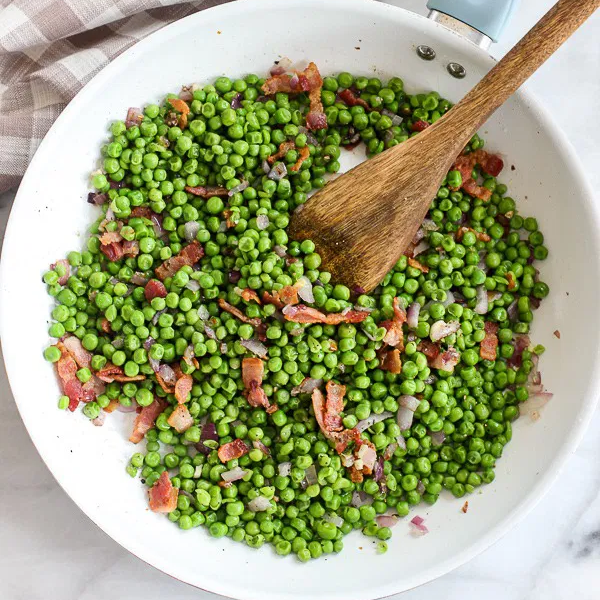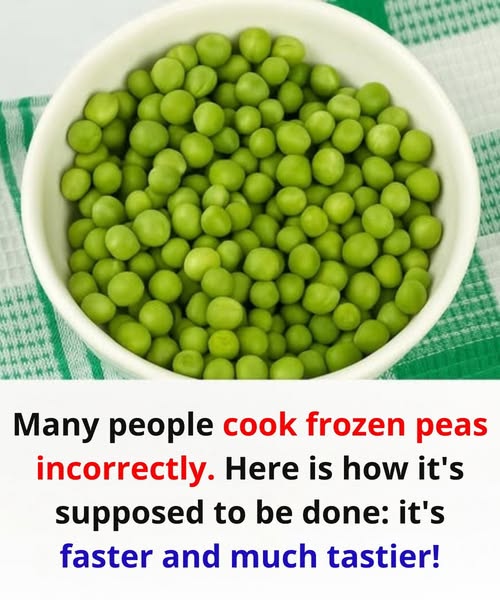Frozen peas are a convenient and nutritious ingredient, but they’re often prepared in ways that leave them soft and lacking flavor. Fortunately, with just a few simple adjustments, you can bring out their best qualities—color, sweetness, and tenderness.
Why Frozen Peas Deserve Special Attention
Unlike some other frozen vegetables, peas don’t need a long cooking time. In fact, they’ve usually been blanched before freezing, so overcooking can easily lead to a dull color and mushy texture.
Here’s how to get the best results every time.
1. Cook Them Straight from the Freezer
Frozen peas don’t need to be thawed in advance. In fact, cooking them directly from frozen helps maintain their texture and freshness. Here’s a quick method:
- Bring a small pot of water to a boil.
- Add a pinch of salt. Some people also add a small amount of baking soda to help keep the bright green color.
- Add the peas directly from the freezer.
- Boil for just 2 to 4 minutes, depending on how firm or soft you prefer them.
- Drain and rinse under cold or ice water to stop the cooking process.

This simple method preserves their natural sweetness and color.
2. Add Peas at the End of Cooking
If you’re making stews, stir-fries, or rice dishes, it’s best to add frozen peas in the last few minutes. Since they’ve already been partially cooked during processing, they only need a short time to heat through.
Tip: Add peas during the last 3 to 5 minutes of cooking. This prevents them from becoming too soft or losing flavor.

3. Try Sautéing Instead of Boiling
For an extra boost of flavor, try sautéing peas with a bit of olive oil or butter:
- Heat a pan over medium heat.
- Add the frozen peas and stir gently as they warm.
- Sauté uncovered for a few minutes until heated through.
This method brings out their natural sweetness and gives them a nice, tender bite.
Extra Tips for the Best Peas:
- Add a pinch of sugar when cooking if you want to highlight their natural sweetness—especially for side dishes or salads.
- Pair with fresh herbs like mint or parsley to enhance their flavor.
- Avoid reheating peas multiple times. They taste best when freshly prepared.
- Don’t use too much water when boiling—just enough to cover them.
- Skip acidic ingredients during cooking. If using lemon juice or vinegar, add it at the end to avoid affecting the texture or color.

In Conclusion
Cooking frozen peas properly can make a big difference in both flavor and presentation. With a few simple changes—like shorter cooking times and careful handling—you can enjoy peas that are vibrant, sweet, and perfectly tender every time.
Want to pass this tip along? Share it with a friend or save it for your next meal prep!

